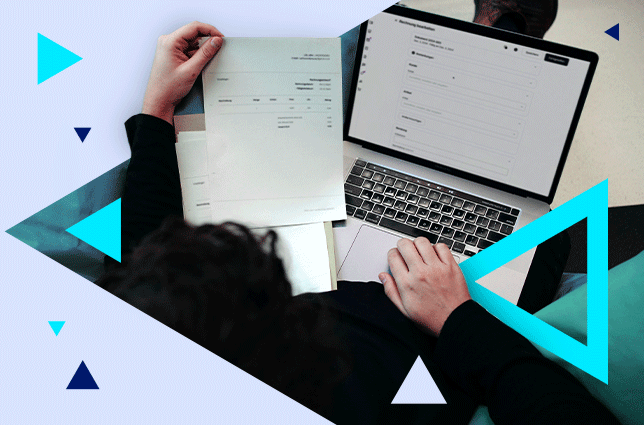
Invoice processing is highly vulnerable to spoofed invoices that mimic legitimate ones, often requiring manual verification that slows payments and burdens accounts payable teams. Errors can lead to financial losses and delays. While automation has streamlined data entry and categorisation, verifying invoice legitimacy still demands manual checks. Common issues like data inconsistencies, duplicates, and incorrect pricing add to the complexity and risk of overpayment.
Each invoice includes a unique NFT, serving as a verification key on the blockchain, ensuring authenticity and an unchangeable record.
Once recorded, invoices cannot be altered. The system instantly verifies details like pricing and vendor information, eliminating manual checks and reducing fraud risk.
Physical receipts are digitised on the blockchain for instant access, improving traceability and efficiency.
Processing over 500,000 invoices monthly, the system is used by 2,500+ companies, with 100,000+ enterprises benefiting from blockchain-enhanced security.
Visma | yuki’s integration of the BSV blockchain has set a new standard for invoice processing security. Since adopting this technology, the company has successfully streamlined its operations, reduced instances of fraudulent invoicing, and improved overall customer trust. This innovation has allowed more than 2,500 companies to confidently process invoices with the knowledge that eachtransaction is securely verified on the blockchain. “We have been working on a smart solution to a complex problem since we started ten years ago. By adding blockchain technology to our accounting platform, we make sure that incoming invoices are correct,” said Jeroen van Haasteren, Head of Products at Visma | yuki. “It is also possible to always retrieve a digital version of physical receipts from the blockchain, achieving 100% recognition of paper receipts.”Through its partnership with mintBlue and integration of the BSV blockchain, Visma | yuki hasdeveloped a powerful tool to protect businesses against invoice fraud. By automating the verification process and providing immutable records, the blockchain solution reduces the burdenon accounts payable teams, increases operational efficiency, and enhances security. This partnership serves as a pioneering case for blockchain in financial services, showcasing how blockchain technology can improve transparency, security, and efficiency across the invoicing landscape.
Blockchain is a distributed digital ledger that securely records transactions across multiple computers. This ensures transparency and prevents fraud. Once verified, data cannot be altered, making it ideal for sectors like finance, healthcare, and manufacturing. The BSV blockchain further builds on this by offering fast, scalable transactions while enabling smart contracts, secure transfers and immutable records – all with a low environmental footprint.
A blockchain works by storing data in blocks that are linked in a chronological chain. Once data is recorded, it cannot be altered without agreement from the rest of the network, ensuring security and trust.
Blockchain is the underlying technology, while Web3 builds on top of the blockchain to create decentralised applications (dApps) and enable user-owned internet experiences.
Non-fungible tokens (NFTs) are unique digital assets that represent ownership or proof of authenticity of a specific item on the blockchain. This can include anything from artwork to music to collectables. Unlike crypto assets, NFTs are not interchangeable because each one is distinct and cannot be replaced with another.
Web3 is a term used to describe the next version of the Internet, known as the Metanet, powered by blockchain. The Metanet enables a more efficient, transparent and monetisable data ecosystem than the current Web2 Internet.
Blockchain offers benefits like enhanced security, transparency, efficiency, and the elimination of third parties. It can be used for everything from financial transactions to supply chain management and voting systems.
A smart contract is a self-executing program on a blockchain which automatically enforces agreements when predefined conditions are met without needing third parties.
Digital assets are anything of value that exists in digital form, such as crypto assets, tokens, or digital records, which are stored and managed on a blockchain. Blockchain provides a secure, transparent, and distributed platform for creating, transferring, and verifying the ownership and integrity of these digital assets.
Decentralised applications (dApps) are applications that run on a blockchain rather than a centralised database. They typically operate using smart contracts, offering greater transparency, security, and user control while removing the need for third parties.
The risks for most blockchains include scalability challenges, high energy consumption, and the potential for hacking or exploitation in poorly designed smart contracts. However, the BSV blockchain is capable of massively scaling to handle millions of transactions per second, which means the CO2 produced per transaction is significantly lower than other competing blockchains.
Sign up to hear about news, events, and much more connected with the BSV blockchain.
BSV Association is a Switzerland based non-profit organisation that serves as the global advocate for the BSV blockchain. Its mission is to advance adoption and unlock the full potential of BSV as a scalable, secure, energy-efficient public blockchain built for data integrity, enterprise solutions, and government applications. The Association supports developers, enterprises, and public sector institutions by fostering innovation, encouraging regulatory compliance, and promoting real-world use cases that demonstrate blockchain’s value on a global scale. Through education, developer engagement, strategic partnerships, public policy initiatives, and technological advancement, BSV Association is committed to driving sustainable growth and long-term utility of blockchain technology.
About
© 2025 BSV Association org. All rights reserved